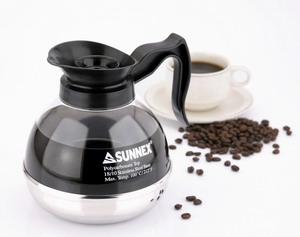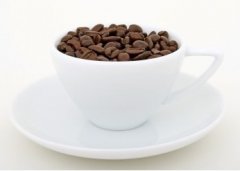Several problems that should be paid attention to in coffee roasting what if the temperature of the oven is too high?

In order to do a good job in baking, every production link can not be ignored, the selection of materials should be fastidious, the weighing of materials should be accurate, and the operation should be careful.
Baking is a science. To understand the principle of baking, we must first understand the three ways of heat conduction, convection and radiation.
Conduction refers to when the heat is transmitted by the heat source, causing the surrounding molecules to vibrate and release heat, gradually moving from the high temperature to the low temperature. The conduction of stainless steel has the phenomenon of uneven heating, which can easily lead to colder and hotter parts of the pot.
Convection means that when the material is heated, the fluid material or gas rises due to the volume expansion and the decrease of density due to the heating action, and its position is supplemented by the colder and denser fluid exchange around it, and then rises by heating, and the surrounding material is added. Such a continuous cycle of heating motion is called convection.
Radiation does not need any medium, and the heat can be radiated directly to the object to heat it. The most common form of radiation used in food is the use of dielectrics, microwaves or infrared rays. In the specific operation of baking, it is often baked in two or three ways at the same time, depending on the environmental conditions at that time.
The problems commonly encountered in coffee roasting are as follows:
First, when the preheating temperature of the oven is not enough, the coffee beans are immediately put into the oven, which prolongs the baking time. Therefore, the baking loss is large, and the color of coffee beans is light, which is due to the lack of heat and the lack of full coking of the skin, resulting in a lack of color and rough internal tissue.
Second, the temperature of the oven is too high, the hard skin is formed prematurely on the surface of the coffee, which suppresses the expansion of the internal tissue, and because of its fast surface coloring, the operator mistakenly thinks that the product has been baked and ends the baking ahead of time. The inside of this kind of bean is sticky and dense, it doesn't expand as it should, and it doesn't have a normal flavor.
Third, the gap is too long after preheating. Too much heat accumulates in the internal furnace which has been dry and hot for too long. As soon as the coffee beans enter the oven, all the heat sources concentrate on the surface of the beans at the initial stage of the baking process, forming too strong heat, and then the heat disappears and cools rapidly. The unstable temperature in the furnace makes the coffee beans difficult to ripen inside.
Fourth, the baking time is too much or not enough. The baking temperature and time should be adjusted according to the number of beans. A small number of baking silos have more space, and the metal conducts more heat radiation, so the temperature is lower, while when the quantity is larger, the temperature can be higher. The baking time also needs to be adjusted flexibly. The heating of beans in the oven is nothing more than the absorption of heat from the appearance and surrounding to the center of the beans, so the baking can be observed from the changes in the appearance of the beans.
In addition, the type and performance of the roaster will also cause the difference of baking time and temperature. The convection design of energy has been continuously improved from the direct-fired gas up-and-down fire mode to the electric heating mode which is now widely used. At the same time, the installation of fans can improve the stability of thermal convection, make the color of baked beans more uniform, and save electricity and baking time.
Advanced tools and equipment make the baking process easier to operate, and it is equally important for operators to accumulate baking experience.
In short, coffee roasting will face a variety of problems, only familiar with the principle of coffee roasting, continue to accumulate experience, coupled with improvisation, baristas can master superb skills.
Important Notice :
前街咖啡 FrontStreet Coffee has moved to new addredd:
FrontStreet Coffee Address: 315,Donghua East Road,GuangZhou
Tel:020 38364473
- Prev

The classification of fried culture and the basic principles of stage fried culture
The raw coffee beans are fried to make the coffee beans show a unique coffee color, aroma and taste. The most important thing of frying and baking is to be able to stir-fry the inside and outside of the beans evenly without overscorching. 80% of the taste of coffee depends on roasting, which is the most important and basic condition for making good coffee. The basic principle of ● fried culture the most important thing is to be able to stir-fry the inside and outside of the beans evenly.
- Next

The roasting and taste of coffee determine the most appropriate roasting degree.
Since the Arabs discovered the coffee beans, the first way to eat them is to put the whole fruit of the coffee into the mouth and chew it to get its juice. Later, they ground the coffee beans from the fruit and mixed them with animal fat as a physical supplement for caravans to trade far away. After that, around 1000 AD, it was changed to the method of boiling raw beans into soup. Until 13.
Related
- Detailed explanation of Jadeite planting Land in Panamanian Jadeite Manor introduction to the grading system of Jadeite competitive bidding, Red bid, Green bid and Rose Summer
- Story of Coffee planting in Brenka region of Costa Rica Stonehenge Manor anaerobic heavy honey treatment of flavor mouth
- What's on the barrel of Blue Mountain Coffee beans?
- Can American coffee also pull flowers? How to use hot American style to pull out a good-looking pattern?
- Can you make a cold extract with coffee beans? What is the right proportion for cold-extracted coffee formula?
- Indonesian PWN Gold Mandrine Coffee Origin Features Flavor How to Chong? Mandolin coffee is American.
- A brief introduction to the flavor characteristics of Brazilian yellow bourbon coffee beans
- What is the effect of different water quality on the flavor of cold-extracted coffee? What kind of water is best for brewing coffee?
- Why do you think of Rose Summer whenever you mention Panamanian coffee?
- Introduction to the characteristics of authentic blue mountain coffee bean producing areas? What is the CIB Coffee Authority in Jamaica?

